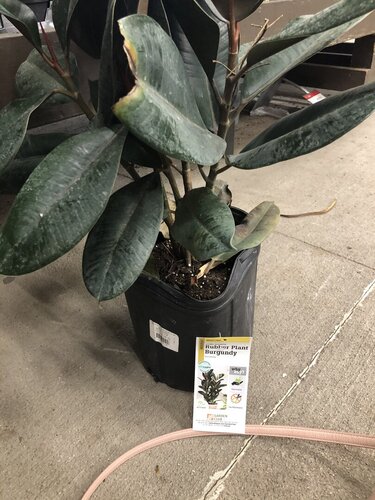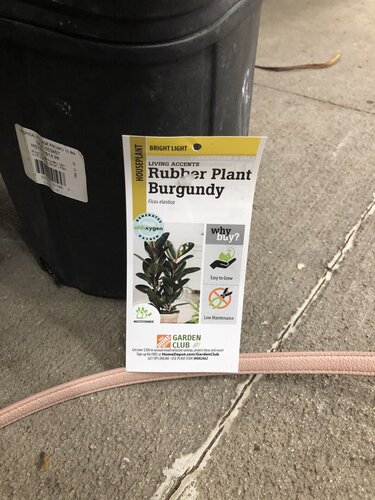Navigation
Install the app
How to install the app on iOS
Follow along with the video below to see how to install our site as a web app on your home screen.
Note: This feature may not be available in some browsers.
More options
You are using an out of date browser. It may not display this or other websites correctly.
You should upgrade or use an alternative browser.
You should upgrade or use an alternative browser.
Is this chameleon safe?
- Thread starter Panther_Chameleon
- Start date
Kaizen
Chameleon Enthusiast
As a member of the ficus genus, it is as safe as Ficus benjaminaI was wondering if Rubber Plants are chameleon safe?
Syreptyon
Chameleon Enthusiast
As a member of the ficus genus, it is as safe as Ficus benjamina
That is not a safe assumption to make, although I understand why one may think it is.
Many people, including respected members of the forums, consider the Rubber Plant to be toxic and a no-no. Just as Schefflera actinophylla is considered toxic (http://www.chameleonnews.com/04AugSnow.html), while Scheffelra arboricola is not. Here's something another member had to say about rubber plants specifically:
"rubber plants are a definite NO/NO for any chams , when a leaf or stem is broken it oozes a substantial amount of raw latex , a very sticky, rapidly drying, almost impossible to wash off substance, that is much like glue or caulk (or liquid rubber), you dont want your chams eating it, drinking it, or getting it on their skin, let alone their eyes. for any one that uses a rubber plant, i would suggest breaking a stem, and rubbing the white liquid on your fingers or hands, spread it around give it a couple of min to dry and then try to wash it off with no soap and just luke warm water (like you would have to do if it got on your cham) THE STEMS OFTEN BREAK QUITE EASILY, and it can ooze latex for sometime afterwards, of all plants to avoid, rubber trees should be at the top of anyones list, latex is NOT cham friendly, regardless of (cham) species and regardless of anyones safe plant list. in fact, now that this posting has brought it to my attention, i intend to contact mike monge of flchams, to see if i can get him to ammend his safe plant list. EDIT/PS when it dries it dries hard and clear like varnish, once dried the sample shown could not even be removed by scraping with a knife,/ d*m, i liked that folder to"
While all members of the Ficus genus are similar in that they all contain sap, rubber plants are more of a risk because of the amount of sap they can produce and how easy it is to break off the leaves. While it may not be super likely to happen, it definitely gives me pause and has kept me from dabbling in rubber plants
nightanole
Chameleon Enthusiast
Well its latex, natures pest repellent. Lettuce was 50% latex till we domesticated it into rabbit food.
Sammy Grigio
Avid Member
Ugghhh, I'm pretty sure that there are a few different rubber plants native to Madagascar and Namibia. So that means chameleons in the wild have access to them I would assume. Correct me if I'm wrong.
I'm sure chameleons in the wild live amongst toxic plants and nontoxic ones...but they can chose what to munch on and they will pay the consequences of their mistakes...that's life in the wild. However, when they are in captivity we want them to be safe so we can enjoy them as long as possible so we should try to avoid the pitfalls of the wild, I think, if we want the best chance of them having a long healthy life with us...no?
Similar threads
- Replies
- 4
- Views
- 2K



